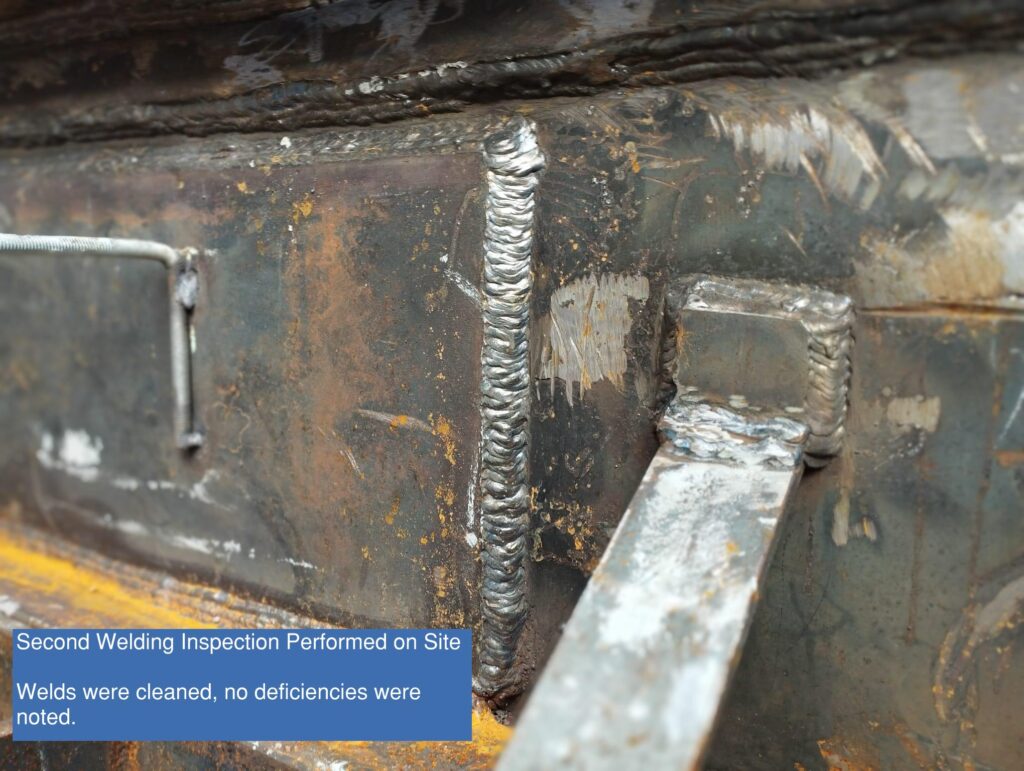What to Anticipate from a Comprehensive Welding Inspection Racine
What to Anticipate from a Comprehensive Welding Inspection Racine
Blog Article
Cutting-edge Strategies to Fillet Weld Examination and Screening: Enhancing Weld Quality and Conformity Criteria
In the world of welding, the high quality and stability of fillet welds play a critical function in making sure the architectural strength and reliability of numerous commercial components. With the constant drive for enhanced performance and conformity with stringent criteria, the exploration of ingenious techniques to fillet weld evaluation and testing has come to be necessary. As markets evolve, the standard approaches might no more suffice in fulfilling the needs of modern-day welding applications. By accepting innovative innovations and techniques, a new horizon of possibilities emerges in the world of weld high quality analysis and adherence to compliance criteria.
Advanced Non-Destructive Testing Methods
Using advanced innovations, advanced non-destructive testing approaches play an important function in making certain the stability and quality of fillet welds. These techniques, such as phased range ultrasonic screening (PAUT) and magnetic bit testing (MPT), deal thorough insights into the weld's internal structure without creating any type of damage to the product. PAUT, for example, uses multiple ultrasonic aspects to examine the weld from various angles, offering a thorough visualization of prospective issues like lack of fusion or cracks.
Likewise, MPT works in spotting surface-breaking defects by using an electromagnetic field and iron bits to the weld location. This technique is particularly helpful for identifying discontinuities that might compromise the weld's stamina. By employing these sophisticated non-destructive testing techniques, weld assessors can precisely evaluate the high quality of fillet welds, guaranteeing compliance with market requirements and policies. The capacity to discover imperfections early not only enhances weld high quality however additionally protects against pricey rework or failings in architectural integrity, underlining the importance of these innovative testing approaches in welding assessments.
Robotics and Automation in Assessment
The assimilation of robotics and automation has actually reinvented the assessment procedure for fillet welds, enhancing efficiency and accuracy in high quality evaluation. Robotics offer specific control and repeatability in checking welds, making sure reputable and consistent outcomes. Automated systems can be programmed to comply with details evaluation courses, ensuring extensive protection of welds and lowering the risk of human mistake.
Robotic examination systems furnished with sophisticated sensing units can find and determine weld attributes with high precision, giving comprehensive data for evaluation. These systems can identify problems such as splits, lack of blend, and porosity, allowing prompt corrective activities to be taken. In addition, robotics and automation enable real-time information collection and evaluation, providing instant responses to drivers and promoting quick decision-making processes.
In addition, using robotics and automation in fillet weld assessment enhances overall efficiency by decreasing inspection times and enhancing examination throughput. By simplifying the inspection process, suppliers can guarantee weld high quality and compliance standards are satisfied efficiently, inevitably resulting in set you back financial savings and boosted product quality.
Making Use Of Artificial Knowledge for Evaluation
Fabricated knowledge plays a crucial function in improving the efficiency and precision of evaluation in fillet weld assessment processes. AI formulas can swiftly process huge quantities of information from weld inspections, finding problems or inconsistencies that may be challenging to determine with the naked eye - Welding Inspection Racine.
Furthermore, AI systems can gain from past evaluation data, continually boosting their capacity to identify potential defects and variances in fillet welds. This adaptive knowing capability boosts the overall top quality control process, decreasing the probability of human mistake and making certain that welds fulfill the called for requirements. By integrating expert system into fillet weld evaluation, markets can attain greater degrees of effectiveness, consistency, and conformity in their assessment practices.
Portable Equipment for On-Site Inspection
 Enhancing field examination performance, the fostering of portable tools transforms on-site analysis processes for fillet welds. These tools offer adaptability and comfort, permitting assessors to perform detailed assessments in different locations, including remote or tough atmospheres. Portable devices such as ultrasonic testing tools, magnetic particle examination devices, and digital radiography systems offer real-time information and high-resolution imaging capabilities, enabling fast decision-making and instant feedback on weld quality.
Enhancing field examination performance, the fostering of portable tools transforms on-site analysis processes for fillet welds. These tools offer adaptability and comfort, permitting assessors to perform detailed assessments in different locations, including remote or tough atmospheres. Portable devices such as ultrasonic testing tools, magnetic particle examination devices, and digital radiography systems offer real-time information and high-resolution imaging capabilities, enabling fast decision-making and instant feedback on weld quality.One considerable benefit of mobile devices is their capability to streamline examination treatments, minimizing downtime and improving overall efficiency. Inspectors can easily deliver these devices to various job sites, removing the need for transporting heavy machinery or components to off-site centers. Additionally, the mobility of these devices promotes cost-effectiveness by decreasing transport expenditures and Visit Your URL accelerating inspection timelines.
Additionally, using mobile tools for on-site examination advertises positive top quality control steps, as examiners can without delay recognize and attend to any kind of potential welding problems or inconsistencies. By integrating these cutting-edge technologies into on-site evaluation techniques, welding professionals can ensure compliance with industry criteria and boost weld quality, ultimately bring about enhanced architectural honesty and security in numerous welding applications.
Integration of Data Management Systems
Having maximized on-site evaluation procedures through the utilization of mobile tools, the next phase involves the seamless combination of information monitoring systems to better enhance effectiveness and information evaluation capabilities in fillet weld assessment and testing. Welding Inspection Racine. By integrating data administration systems right into the assessment procedure, organizations can simplify data collection, storage space, and analysis. This assimilation enables for real-time surveillance of weld top quality, immediate recognition of problems, and timely my response decision-making to rectify any kind of problems that may emerge during the assessment procedure
The assimilation of data administration systems allows seamless communication in between different stakeholders involved in the examination procedure, promoting cooperation and boosting total top quality control procedures. Eventually, the assimilation of information management systems offers to elevate the requirements of fillet weld inspection and testing, making sure conformity with market policies and improving weld top quality.
Verdict
Finally, cutting-edge techniques to fillet weld evaluation and screening have actually dramatically boosted weld quality and compliance criteria. Advanced non-destructive testing techniques, robotics, automation, expert system, portable tools, and data monitoring systems have changed the method weld inspections are carried out. By utilizing these technologies, markets can guarantee that welds meet the required quality criteria and laws, inevitably improving general effectiveness and security in welding processes.

By using these sophisticated non-destructive screening strategies, weld examiners can accurately analyze the see quality of fillet welds, making certain conformity with market criteria and guidelines. Portable tools such as ultrasonic testing devices, magnetic particle evaluation equipment, and electronic radiography systems give real-time data and high-resolution imaging capacities, enabling fast decision-making and instant feedback on weld high quality.
Having maximized on-site assessment processes via the application of mobile tools, the following stage entails the seamless assimilation of data administration systems to further boost performance and information analysis capacities in fillet weld inspection and screening (Welding Inspection Racine). Ultimately, the combination of data management systems serves to boost the standards of fillet weld inspection and testing, making certain conformity with sector policies and boosting weld top quality
 In verdict, ingenious approaches to fillet weld assessment and screening have significantly enhanced weld quality and conformity criteria.
In verdict, ingenious approaches to fillet weld assessment and screening have significantly enhanced weld quality and conformity criteria.Report this page